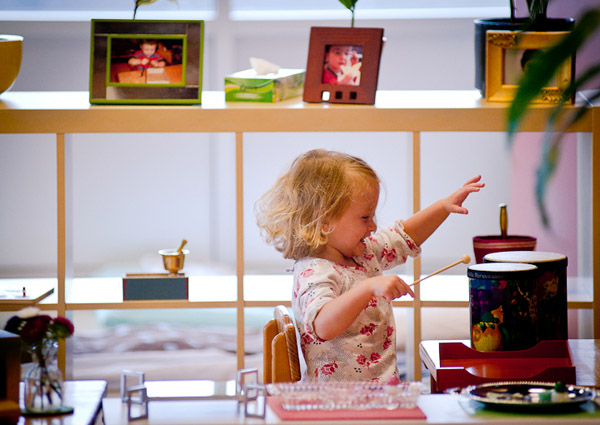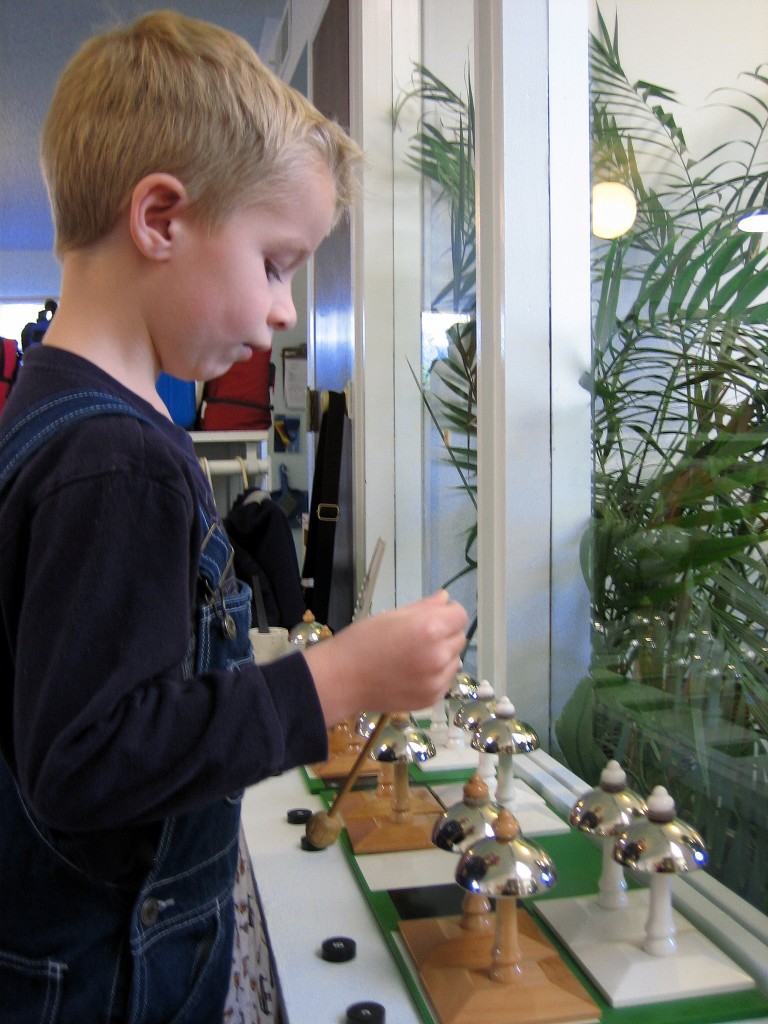
October 24, 2022
At a recent school event, a parent asked about music in the Montessori classroom. It’s a legitimate question, as sometimes we are so excited to share with parents the math or language or science or geometry materials, that we forget to talk about art and music, although we hold them in equal esteem with the more purely “academic” pursuits.
As parents, what would you ideally want your children to be exposed to in music classes in their early and elementary years? You would probably want your child to learn some lovely songs and to sing enough that they learn to carry a tune. You might want them to receive a bit of ear training because you’ve heard that this is the age when children either develop this skill or go through life unable to distinguish pitch. You would probably hope that they would be exposed to a variety of musical expressions and perhaps a bit of music history. You might even hope for an introduction to musical notation. It may surprise you to learn that we provide all of that and more in the Montessori classroom.
The operative term here is “in the classroom.” Rather than being confined to a music class for an hour once per week (about the most you can hope for in most schools, and increasingly hard to find these days), in Montessori these activities are included in the daily life of the class and respected at the same level as any other form of learning.
To begin to answer this parent’s question, I borrowed a Montessori sensorial material, the “Bells,” from one of the Children’s House (3-6-year old) classrooms. The Bells consist of two series of bells ranging from middle to high “C.” One series is painted black or white, and correspond to the black and white keys of the piano. The other set, which we will call the “brown bells,” is unpainted with a natural wood finish.
For the early lessons, the four black bells (and the four brown bells that correspond to them) are left on a lower shelf, so the child is working with only the series of white bells (and corresponding brown bells) that represent the diatonic scale of 8 notes (C, D, E, F, G, A, B, C). While the white bells remain stationary as the “control” set, the child can mix up the set of brown bells, then match each to the white bell that corresponds in pitch. After much successful practice with matching, children become so familiar with the diatonic scale that they can put the bells in order from middle to high C, by ear alone. They no longer need to play the white bells, except at the end to check their work. Could there be better “ear” training than this?

But we are not done. Now the teacher can add in the 4 black bells (and their corresponding brown bells) thus adding the sharps/flats. The same matching and grading work ensues but now with a full chromatic scale. In Montessori, we always provide experience first, before attaching language, and the Bells are no exception. Only after this rich matching and grading experience, did we teach children the names of the notes and their position on the musical staff. The children begin to learn to write and read music, in a similarly natural manner to the way that they learned to write and read words.
In elementary, the work with the bells continues, adding in other aspects of musical notation, and extends to work with the elementary music material called the Tone Bars, which allow for transposition and an exploration of other scale patterns.
But the Bells and Tone Bars don’t begin to encompass all of the ways that children experience and learn about music as part of the daily life of the classroom. Singing is part of nearly every day and increases in challenge and complexity as the children progress. If you visit a Montessori elementary class, you’ll see for yourself the kinds of complex rounds and harmonies of which children are capable.
From their earliest days in a Montessori toddler class, we have also clapped rhythms together. We draw upon this preparation when the time comes for the presentation of the values of notes (whole, half, and quarter notes, for example) and the ways in which those note values are written. From the beginning, we also train children in moving their bodies to different moods and rhythms of music in the group work called Walking on the Line. Listening to different types and styles of music is also part of their daily experience, and fits into both their classification work (the names of instruments, composers, and styles of music) and their exploration of human history (how music has been expressed in different cultures at different times).
What’s most important about all of this, is the fact that it takes place in the classroom, not in a separate music class with a specialist. What does this communicate to the children? That musical expression is not the realm of a few gifted people, but a birthright common to all of us. With the right experiences, all children can sing and carry a tune, all children can train their ears, and all children can learn to read and write music. In other words, all children can participate in one of the basic expressions of what it means to be human, in the language of music.